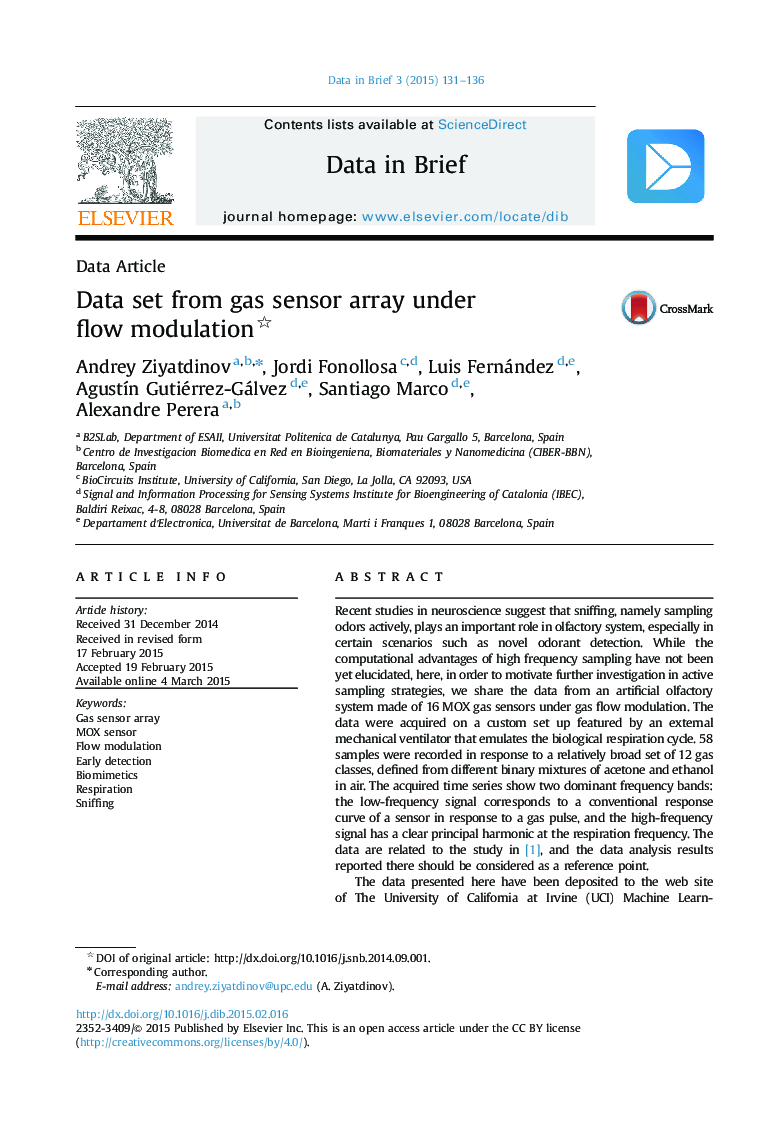| Article ID | Journal | Published Year | Pages | File Type |
|---|---|---|---|---|
| 175202 | Data in Brief | 2015 | 6 Pages |
Recent studies in neuroscience suggest that sniffing, namely sampling odors actively, plays an important role in olfactory system, especially in certain scenarios such as novel odorant detection. While the computational advantages of high frequency sampling have not been yet elucidated, here, in order to motivate further investigation in active sampling strategies, we share the data from an artificial olfactory system made of 16 MOX gas sensors under gas flow modulation. The data were acquired on a custom set up featured by an external mechanical ventilator that emulates the biological respiration cycle. 58 samples were recorded in response to a relatively broad set of 12 gas classes, defined from different binary mixtures of acetone and ethanol in air. The acquired time series show two dominant frequency bands: the low-frequency signal corresponds to a conventional response curve of a sensor in response to a gas pulse, and the high-frequency signal has a clear principal harmonic at the respiration frequency. The data are related to the study in [1], and the data analysis results reported there should be considered as a reference point.The data presented here have been deposited to the web site of The University of California at Irvine (UCI) Machine Learning Repository (https://archive.ics.uci.edu/ml/datasets/Gas+sensor+array+under+flow+modulation). The code repository for reproducible analysis applied to the data is hosted at the GutHub web site (https://github.com/variani/pulmon).The data and code can be used upon citation of [1].
